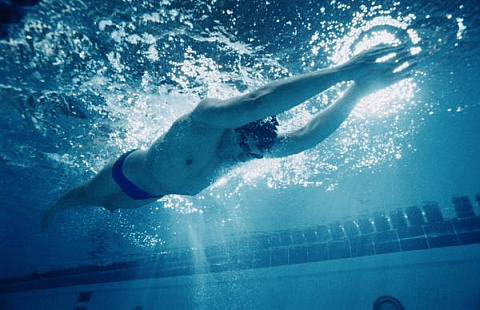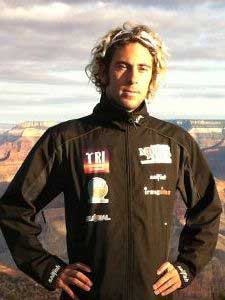Swim Technique – Part 3

SWIM DRILLS: WHEN ARE THEY REALLY NEEDED? In the first article in this series about swim technique, I talked about the process of developing a technique for optimal open-water swimming. In the second, I discussed swim fitness and ways to build it. Here, I consider the reasons we use drills and when to use them.
Read part 1 : Click here
Read part 2 : Click here
SWIM DRILLS: WHEN ARE THEY REALLY NEEDED?
When we think about swim training/coaching, we always think drills, drills, drills. Many top-end swim coaching companies base their whole business around drills—their own special drills—to produce the best stroke. I want to look at why we use drills and when we should use drills as I think they are often overused.
Firstly, a drill is breaking down the stroke into its component parts and refining movement patterns to enhance the overall stroke and so improving performance. Blindly prescribing drills to every swimmer, though, is not the route to go in my opinion; we need to see each individual athlete to assess what they are doing wrong and what needs to be fixed. We can use video footage of the swim stroke to gauge any potential problems and, if there are any, then go about fixing faults—if something is already working then there is no need to try and fix it. In fact, trying to improve something that already works fine can be very detrimental to the athlete.
When we train in the pool or open water, the aim is to perform as many good strokes as possible. If our technique is solid and we can repeat it then we do not need to be doing drills to change anything—in essence every stroke is a drill! This, though, is rarely the case and as triathletes we have days when we are so tired that our technique can just be terrible and needs a little stimulus to get back to good pathways.
In essence, the body gets lazy and wants to switch on the least amount of muscle to perform any task in order for the fatigued muscles to recover.
This “laziness” causes us to swim very poorly compared with when we are fresh but we can override the brain by performing drills that force muscle activation. So if you get in the pool and feel bad, your stroke timing feels off and power is low, then you need to do something about it: stop your session and perform a drill to fix what’s wrong and then get back into your workout.
It may only take 2-4 x 50m to fix the issue and you can then have a great session.
As an example I like to use what I call the power drill on days when I just feel wrong in the water: this is a great drill that sets stroke timing and also activates all swim-related muscle fibres.
POWER DRILL
Push off the wall on your front, head down and using a light kick, arms are always under the water—elbows and upper arms at the surface and wide of the body. Now pull one arm forward and the other arm back, so you are fighting one arm against the other. It is important that you always lead with the elbow so when pulling the hand forward from the back, your hand is pointing to the bottom of the pool all the way with the elbow leading the hand until it passes the shoulder—from this point the hand comes forward to full extension out front. The hand pulling back does the opposite so the hand comes down while the elbow stays forward of the shoulder and then all back together.
SEE VIDEO BELOW FOR DEMONSTRATION
When you master this drill, you should hardly be moving up the pool!
When we perform a drill in training it is important that we do the drill and then immediately swim after. This is helping the brain associate the drill to the full technique. So my advice: if you feel off, stop your session and perform 2-4 x50m, swimming 25m drill and then 25m moderate effort full stroke.
While the power drill is my go-to drill for most athletes right now (depending on the athlete and the issue), other drills can be used to fix specific problems.
DRILLS FOR INJURIES
I also recommend using drills when you are injured or notice a sudden pain. With swimming this is very common in the shoulder around the rotator cuff. When we swim with a technique that goes against our structure we can easily get inflammation in this area and it is very painful. The standard advice given to athletes is to stop using paddles or swimming until the problem goes away. This can take a very long time and not really addresses the issue so the pain is likely to return once back to normal swimming.
Shoulder problems occur easily in triathletes as we have stiff shoulders from all the riding we do. We need to swim with a style that takes this into account.
So if you develop shoulder pain, or if you already have, then a couple of drills will go a long way to solving the problem. The issue is normally bringing the recovery arm too close to the body and too high above the water—to remedy this we need to recover wider over the water while keeping the hand closer to the water.
DRILL ONE – hand drag
Simply swim as normal but the recovery hand must stay in the water all the way to the wrist—the only way to do this is by staying wide of the body and when you get this right you will instantly feel less stress on the shoulder.
DRILL TWO – finger trail
This is a follow-on drill from the first, so now the recovery hand is just above the water and the finger tips are still touching the water on the recovery.
If you have shoulder problems, these drills should be performed in your warm-up before every swim; if you suddenly develop pain during a session, you should stop and perform some drills before continuing. As above, I recommend just 3-4x50m of each drill, swimming 25m drill and then 25m moderate.
Drills have become an integral part of swimming and certainly have their place when learning to swim. After that, drills must be very specific to the athlete’s needs and performed only when needed. As triathletes we have limited swim-training time and we need to make the most of this for fitness gains. Swim fitness is very important when racing triathlon, as your condition (much more important than time) leaving the water affects the rest of the race. The focus of your swimming should be on taking as many good strokes as possible and using drills can aid this process at times.
 Article by Alun ‘Woody’ Woodward, Certified ironguides Coach – UK/Hungary
Article by Alun ‘Woody’ Woodward, Certified ironguides Coach – UK/Hungary
For SWIMBIKERUN.ph
Featured image source : healthyliving.azcentral.com/gliding-exercises-swimming-6179










